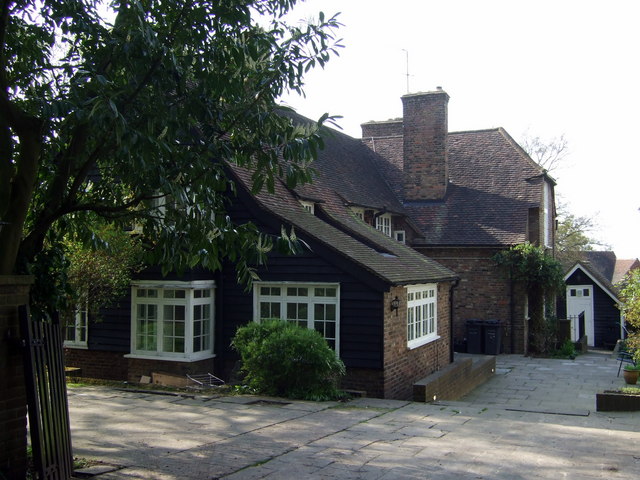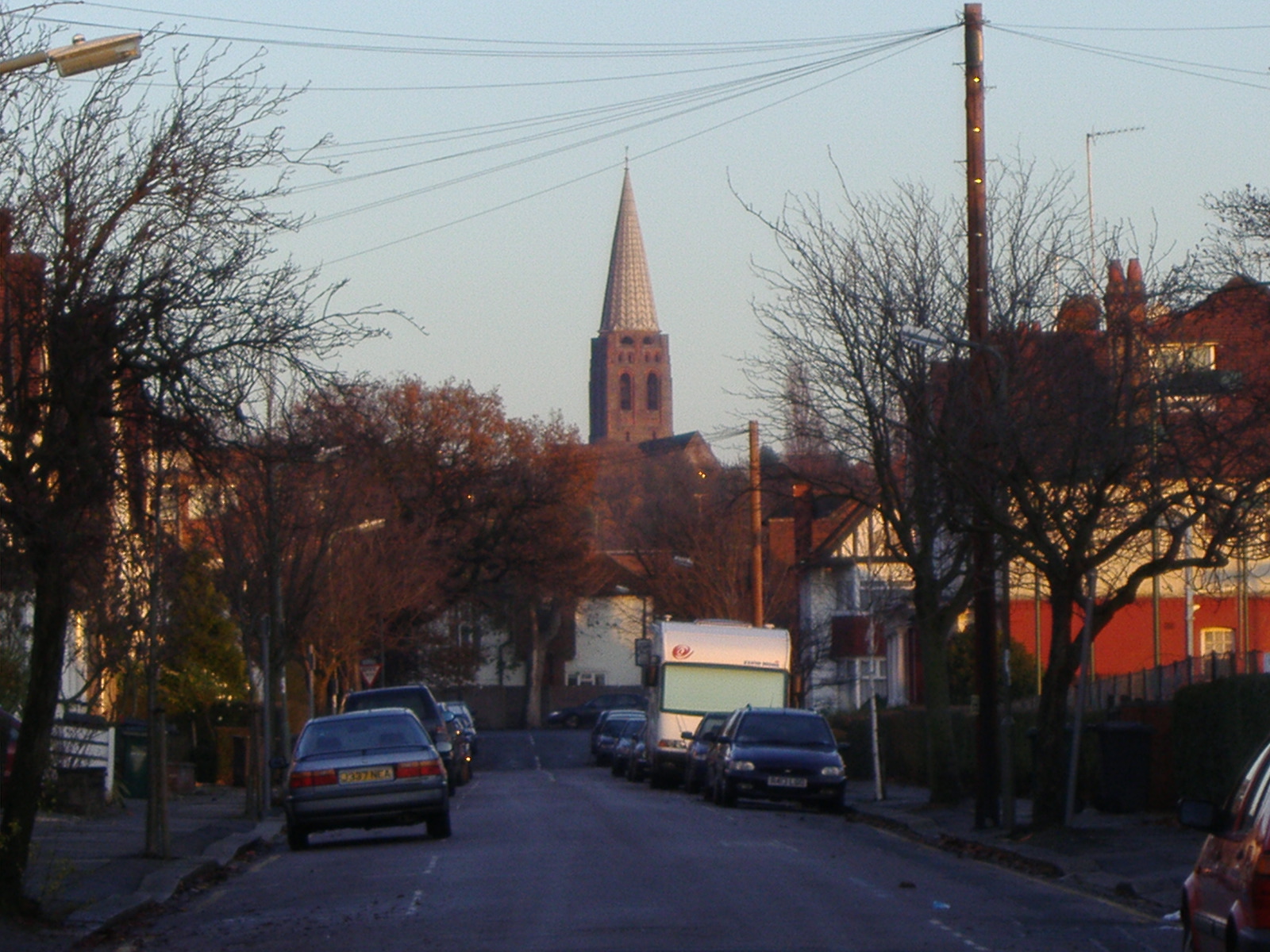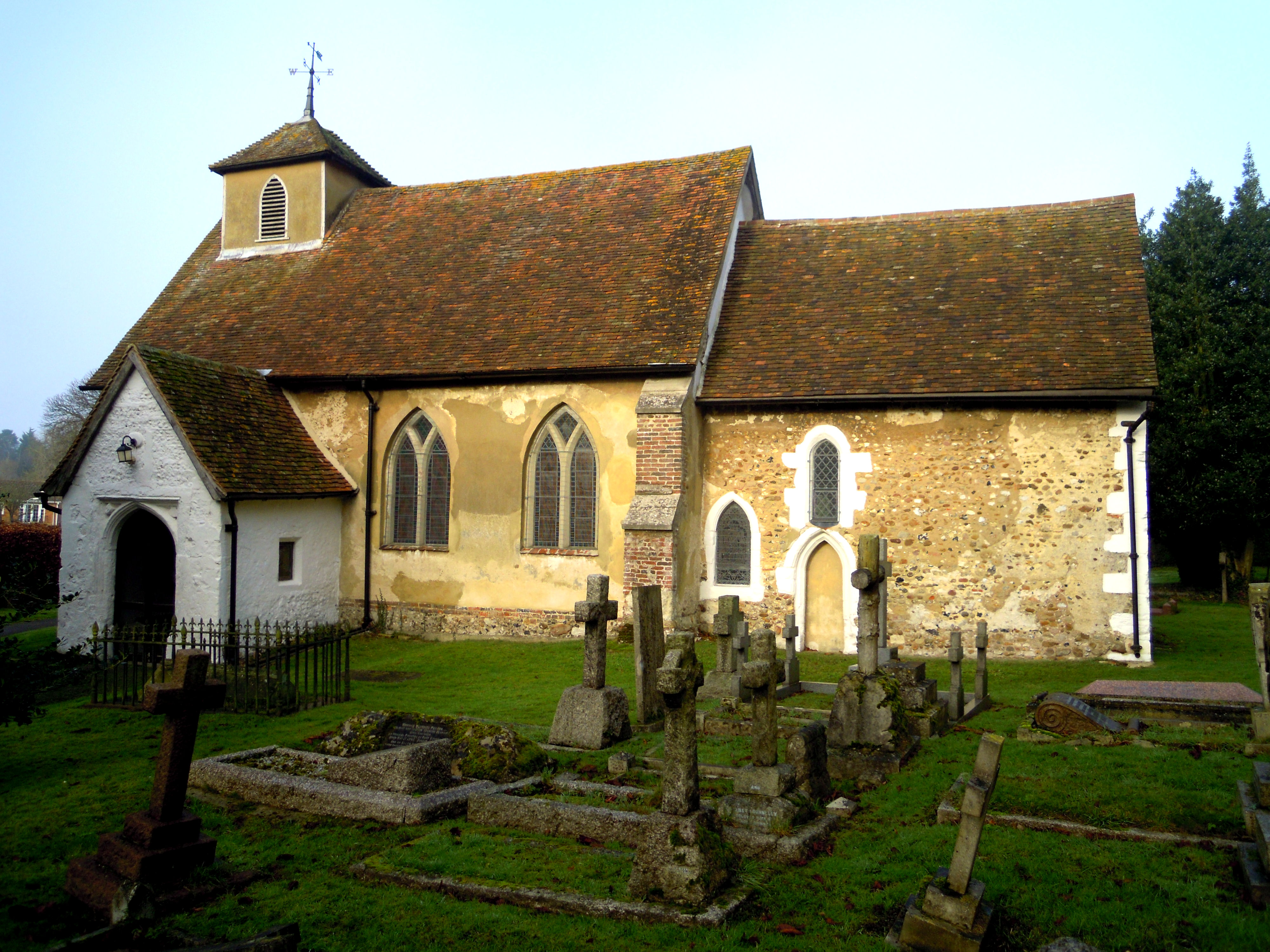|
Sir Raymond Unwin
Sir Raymond Unwin (2 November 1863 – 29 June 1940) was a prominent and influential English engineer, architect and town planner, with an emphasis on improvements in working class housing. Early years Raymond Unwin was born in Rotherham, Yorkshire and grew up in Oxford, after his father sold up his business and moved there to study. He was educated at Magdalen College School, Oxford. In 1884 he become an apprentice engineer for Stavely Iron & Coal Company near Chesterfield. Unwin had become interested in social issues at an early age and was inspired by the lectures and ideals of John Ruskin and William Morris. In 1885 he moved to Manchester and became secretary of Morris's local Socialist League. He wrote articles for the League's newspaper and spoke on street corners for its cause and for the Labour Church. He also became a close friend of the socialist philosopher Edward Carpenter, whose Utopian community ideas led to his developing a small commune at Millthorpe near Shef ... [...More Info...] [...Related Items...] OR: [Wikipedia] [Google] [Baidu] |
Rotherham
Rotherham () is a large minster and market town in South Yorkshire, England. The town takes its name from the River Rother which then merges with the River Don. The River Don then flows through the town centre. It is the main settlement of the Metropolitan Borough of Rotherham. Rotherham is also the third largest settlement in South Yorkshire after Sheffield and Doncaster, which it is located between. Traditional industries included glass making and flour milling. Most around the time of the industrial revolution, it was also known as a coal mining town as well as a contributor to the steel industry. The town's historic county is Yorkshire. From 1889 until 1974, the County of York's ridings became counties in their own right, the West Riding of Yorkshire was the town's county while South Yorkshire is its current county. Rotherham had a population of 109,691 in the 2011 census. The borough, governed from the town, had a population of , the most populous district in En ... [...More Info...] [...Related Items...] OR: [Wikipedia] [Google] [Baidu] |
Edgar Wood
Edgar Wood (17 May 1860 – 1935) was a British architect, artist and draftsman who practised from Manchester at the turn of the 20th century and gained a considerable reputation in the United Kingdom. He was regarded as a proponent of the Arts and Crafts movement which was prevalent between 1860 and 1910. Wood's work is principally domestic, but he designed several churches and small commercial buildings. He worked as an individual designer, mostly with only one assistant, and confined himself to the smaller type of building that he could control personally. Although he was active in Manchester for over twenty years, most of his work is in nearby towns, such as Rochdale, Oldham and Middleton (of which he was native), and in outlying districts such as Bramhall and Hale. He contributed to Manchester in various ways. He was a founder of the Northern Art Workers' Guild in 1896, one of the major provincial societies within the Arts and Crafts Movement and was president of the M ... [...More Info...] [...Related Items...] OR: [Wikipedia] [Google] [Baidu] |
Local Government Board
The Local Government Board (LGB) was a British Government supervisory body overseeing local administration in England and Wales from 1871 to 1919. The LGB was created by the Local Government Board Act 1871 (C. 70) and took over the public health and local government responsibilities of the Home Secretary and the Privy Council and all the functions of the Poor Law Board, which was abolished. In 1919 the LGB was converted into a new department called the Ministry of Health. Membership The board was headed by a president, appointed by and serving at the pleasure of the British monarch. The president was permitted to hold a seat and vote in the House of Commons, and the position was generally held by a cabinet minister. In addition the board had a number of '' ex officio'' members consisting of the Lord President of the Council, the Principal Secretaries of State, the Lord Privy Seal and the Chancellor of the Exchequer. The ''ex officio'' members were not paid a salary. The boa ... [...More Info...] [...Related Items...] OR: [Wikipedia] [Google] [Baidu] |
Wyldes Farm
Wyldes Farm is a Grade II* listed former farmhouse in the hamlet of North End, Hampstead, in the London Borough of Barnet (right on the boundary with Camden), NW11. Early history of the estate Built in about 1600, it was the farmhouse for one of two estates acquired by Eton College in 1449, soon after its foundation. The estate includes what is now the Hampstead Heath Extension. The other estate was Chalcotts, better known today as Chalk Farm. The Eton College estate originated in grants of land by Bela, widow of Austin the mercer, in 1259 and by William de Pavely and Millicent his wife in 1273 to the hospital of St James, Westminster, which in 1321 held 124 acres of land and wood in the parish. After 1449, when custody of the hospital was granted to Eton College (in order to provide accommodation for officers of the college on business trips to London), the college took possession of the Hendon estate, which was called "the Wylde" in 1480–1. Eton surrendered St. James's Hospi ... [...More Info...] [...Related Items...] OR: [Wikipedia] [Google] [Baidu] |
Hampstead Garden Suburb
Hampstead Garden Suburb is an elevated suburb of London, north of Hampstead, west of Highgate and east of Golders Green. It is known for its intellectual, liberal, artistic, musical and literary associations. It is an example of early twentieth-century domestic architecture and town planning in the London Borough of Barnet, northwest London. The master plan was prepared by Richard Barry Parker, Barry Parker and Sir Raymond Unwin. Comprising just over 5,000 properties, and home to around 16,000 people, undivided houses with individual gardens are a key feature. The area enjoys landscaped Squares in London, garden squares, several communal parks and Hampstead Heath Extension. History Hampstead Garden Suburb was founded by Henrietta Barnett, who, with her husband Samuel Augustus Barnett, Samuel, had started the Whitechapel Art Gallery and Toynbee Hall. In 1906, Barnett set up the Hampstead Garden Suburb Trust Ltd, which purchased 243 acres of land from Eton College for the schem ... [...More Info...] [...Related Items...] OR: [Wikipedia] [Google] [Baidu] |
Hampstead
Hampstead () is an area in London, which lies northwest of Charing Cross, and extends from Watling Street, the A5 road (Roman Watling Street) to Hampstead Heath, a large, hilly expanse of parkland. The area forms the northwest part of the London Borough of Camden, a borough in Inner London which for the purposes of the London Plan is designated as part of Central London. Hampstead is known for its intellectual, liberal, artistic, musical, and literary associations. It has some of the most expensive housing in the London area. Hampstead has more millionaires within its boundaries than any other area of the United Kingdom.Wade, David"Whatever happened to Hampstead Man?" ''The Daily Telegraph'', 8 May 2004 (retrieved 3 March 2016). History Toponymy The name comes from the Old English, Anglo-Saxon words ''ham'' and ''stede'', which means, and is a cognate of, the Modern English "homestead". To 1900 Early records of Hampstead can be found in a grant by King Ethelred the Unread ... [...More Info...] [...Related Items...] OR: [Wikipedia] [Google] [Baidu] |
Henrietta Barnett
Dame Henrietta Octavia Weston Barnett, DBE (''née'' Rowland; 4 May 1851 – 10 June 1936) was an English social reformer, educationist, and author. She and her husband, Samuel Augustus Barnett, founded the first "University Settlement" at Toynbee Hall (in the East End of London) in 1884. They also worked to establish the model Hampstead Garden Suburb in the early 20th century. Early life Born in Clapham, London, Henrietta Octavia Weston Rowland lost her mother (Henrietta Monica Margaretta Ditges) at an early age. Her father, Alexander William Rowland, a wealthy businessman associated with the Macassar Oil Company, raised her and seven siblings at their London home and a country house in Kent, where she developed a lifelong appreciation of country pursuits. One of her sisters was the philanthropist Alice Hart. At age 16, Henrietta was sent to a boarding school in Devon run by the Haddon sisters, who, influenced by James Hinton, were committed to social altruism. When her fath ... [...More Info...] [...Related Items...] OR: [Wikipedia] [Google] [Baidu] |
Baldock
Baldock ( ) is a historic market town and unparished area in the local government district of North Hertfordshire in the county of Hertfordshire, England, where the River Ivel rises. It lies north of London, southeast of Bedford, and north northwest of the county town of Hertford. Nearby towns include Royston to the northeast, Letchworth and Hitchin to the southwest and Stevenage to the south. History and etymology Baldock has an exceptionally rich archaeological heritage.Moorhead, Sam. "A survey of Roman coin finds from Hertfordshire", in Lockyear, Kris (2015)''Archaeology in Hertfordshire: Recent Research'' University of Hertfordshire Press. Paleolithic, Neolithic and Bronze Age settlements show the site of Baldock has been continuously occupied since prehistoric times.Mawer, J. E. B., Stenton, Allen and Gover, F. M. (1938) ''The Place-Names Of Hertfordshire'' (English Place-Name Society Volume XV), Cambridge University Press, ASIN: B0019T1T10 iArchaeology Data Service ar ... [...More Info...] [...Related Items...] OR: [Wikipedia] [Google] [Baidu] |
Garden City Movement
The garden city movement was a 20th century urban planning movement promoting satellite communities surrounding the central city and separated with greenbelts. These Garden Cities would contain proportionate areas of residences, industry, and agriculture. Ebenezer Howard first posited the idea in 1898 as a way to capture the primary benefits of the countryside and the city while avoiding the disadvantages presented by both. In the early 20th century, Letchworth, Brentham Garden Suburb and Welwyn Garden City were built in or near London according to Howard's concept and many other garden cities inspired by his model have since been built all over the world. History Conception Inspired by the utopian novel ''Looking Backward'' and Henry George's work ''Progress and Poverty'', Howard published the book '': a Peaceful Path to Real Reform'' in 1898 (which was reissued in 1902 as ''Garden Cities of To-morrow''). His idealised garden city would house 32,000 people on a site of , pl ... [...More Info...] [...Related Items...] OR: [Wikipedia] [Google] [Baidu] |
Letchworth
Letchworth Garden City, commonly known as Letchworth, is a town in the North Hertfordshire district of Hertfordshire, England. It is noted for being the first garden city. The population at the time of the 2011 census was 33,249. Letchworth was an ancient parish, appearing in the Domesday Book of 1086. It remained a small rural village until the start of the twentieth century. The development of the modern town began in 1903, when much of the land in Letchworth and the neighbouring parishes of Willian and Norton was purchased by a company called First Garden City Limited, founded by Ebenezer Howard and his supporters with the aim of building the first "garden city", following the principles Howard had set out in his 1898 book, ''To-morrow: A Peaceful Path to Real Reform''. Their aim was to create a new type of settlement which provided jobs, services, and good housing for residents, whilst retaining the environmental quality of the countryside, in contrast to most industria ... [...More Info...] [...Related Items...] OR: [Wikipedia] [Google] [Baidu] |
Benjamin Seebohm Rowntree
Benjamin Seebohm Rowntree, CH (7 July 1871 – 7 October 1954) was an English sociological researcher, social reformer and industrialist. He is known in particular for his three York studies of poverty conducted in 1899, 1935, and 1951. The first York study involved a comprehensive survey into the living conditions of the poor in York during which investigators visited every working class household, and his methodology inspired many subsequent researches in British empirical sociology."Benjamin Seebohm Rowntree." ''World of Sociology'', Gale, 2001. ''Gale In Context: Biography'', https://link.gale.com/apps/doc/K2427100159/BIC?u=mlin_c_collhc&sid=BIC&xid=9317a272. Accessed 6 Oct. 2019. By strictly defining the concept of poverty in his studies, he was able to reveal that the poverty in York was more of structural rather than moral reasons, such as of low wages, which went against the traditionally held view that the poor were responsible for their own plight. [...More Info...] [...Related Items...] OR: [Wikipedia] [Google] [Baidu] |
Joseph Rowntree (Philanthropist)
Joseph Rowntree (24 May 1836 – 24 February 1925) was an English Quaker philanthropist and businessman from York. Rowntree is perhaps best known for being a champion of social reform, partner and friend of Charles Booth, and his time as a chocolatier at family business ''Rowntree's'', one of the most important in Britain. Even as a powerful businessman, he was deeply interested in improving the quality of life of his employees; this led to him becoming a philanthropist, pursuing many charitable causes. In 1904 he created three trusts, the Joseph Rowntree Village Trust (JRVT) which was originally set up to build and manage the garden village of New Earswick, the Joseph Rowntree Charitable Trust (JRCT) and the Joseph Rowntree Social Services Trust (JRSST). He suggested that only the JRVT would be permanent but all the trusts are still in existence although the Social Services Trust has changed its name to the Joseph Rowntree Reform Trust and with the separation of the Joseph ... [...More Info...] [...Related Items...] OR: [Wikipedia] [Google] [Baidu] |









